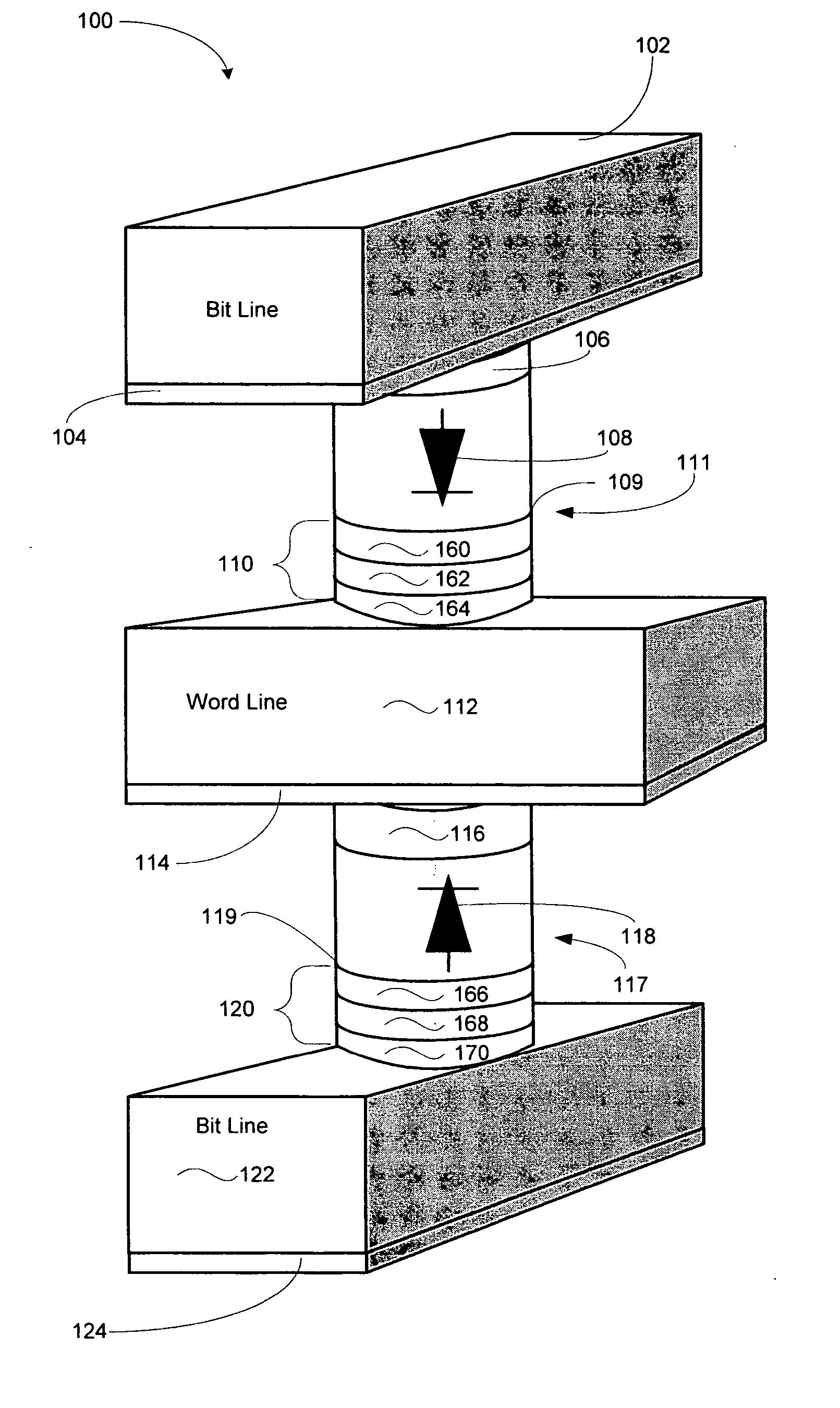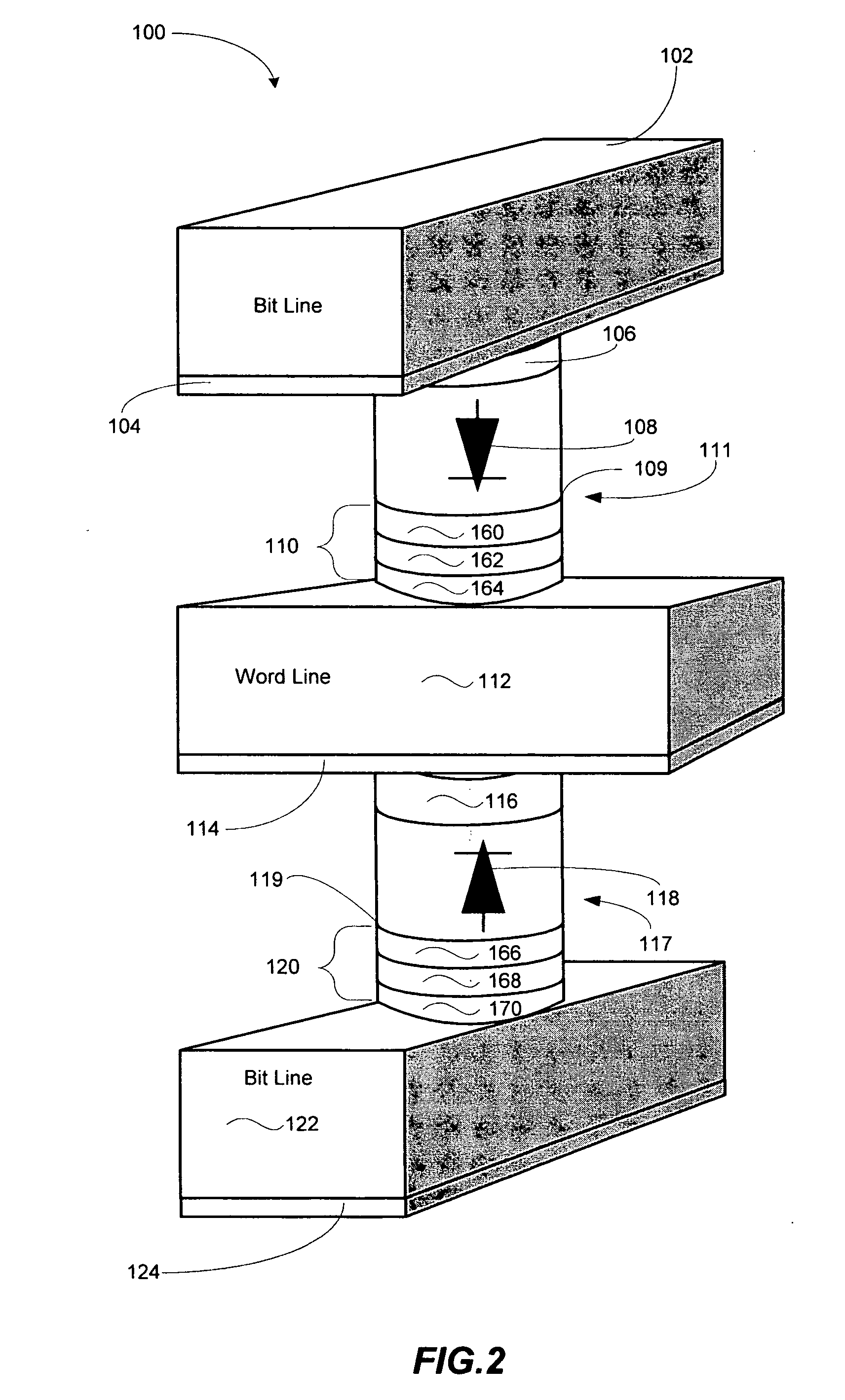Unipolar resistance random access memory (RRAM) device and vertically stacked architecture
a random access memory and unipolar resistance technology, applied in the direction of digital storage, galvano-magnetic devices, instruments, etc., can solve the problems of limited application of vertically stacked memories, pcram is not compatible with this architecture, and poly-silicon diodes require about 750 c during fabrication, so as to achieve high performance
- Summary
- Abstract
- Description
- Claims
- Application Information
AI Technical Summary
Benefits of technology
Problems solved by technology
Method used
Image
Examples
Embodiment Construction
[0033] As known in the art, large cross-point arrays of memory cells may be formed and stacked vertically on top of one another. For example, the arrays may be formed by 8192 word lines in layer 1, 128 perpendicular bit lines in layer 2, 8192 word lines in layer 3, 128 bit lines in layer 4, and on up to 8192 word lines in layer 9. Memory cells are formed at the intersections of bit lines and word lines to form 8 layers of memory cells. Thus, the 3-dimentional array includes eight million memory cells and a large number of arrays may be included on a semiconductor die.
[0034] Within each memory cell is a RRAM device, as previously described, and a poly-silicon diode. Diodes point in opposite directions in vertically adjacent memory layers so that current may flow from each bit line to any of the 16384 word lines directly above or below the bit line. Accordingly, bit lines and word lines are “shared” (expect for the bottom-most word line and top-most word line which are typically conn...
PUM
 Login to View More
Login to View More Abstract
Description
Claims
Application Information
 Login to View More
Login to View More - R&D
- Intellectual Property
- Life Sciences
- Materials
- Tech Scout
- Unparalleled Data Quality
- Higher Quality Content
- 60% Fewer Hallucinations
Browse by: Latest US Patents, China's latest patents, Technical Efficacy Thesaurus, Application Domain, Technology Topic, Popular Technical Reports.
© 2025 PatSnap. All rights reserved.Legal|Privacy policy|Modern Slavery Act Transparency Statement|Sitemap|About US| Contact US: help@patsnap.com



